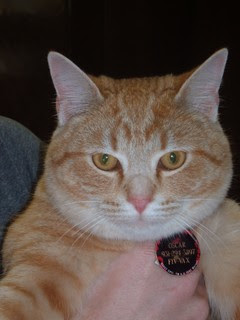
Gone to the dogs. That's how a part of Linda Franzblau's life turned two years ago, and it seems she couldn't be happier.
The single mom -- of 6-year-old daughter Hannah and two rescued animals, King, a Yorkie terrier mix, and Gracie, a Boston terrier purebred -- uses her spare time to conduct "pet pawties." They are gatherings for people, but it is their pets that benefit.
Think Tupperware and Avon, but substitute pet toys, food, apparel and safety devices. Games, prizes and treats are a part of the party. Products are designed to enhance the health or stimulate the senses and intellect of a dog, cat or bird.
Intellect?
Franzblau believes pets get lazy and bored when they are not challenged mentally. So place a treat inside a ball, and a ball inside another toy, then let the animal have fun figuring out how to retrieve his reward.
Petlane is a 4-year-old California company. Petlane's founder, in 1978, started Discovery Toys, a line of fun and educational products for children.
Franzblau, who lives in Oconomowoc but conducts Petlane parties locally, also works in marketing for the books division of Kalmbach Publishing in Milwaukee. She contends the average pet store employee is not well informed about product safety, nutritional content and other product limitations.
Petlane's "core product," Franzblau says, is a pet seat belt, which doubles as a harness. It easily can be unhooked and attached to a leash. The cost is $54-$57, depending upon animal size.
The sound and feel of a human heartbeat pulsate inside of a soft pet bed, to help ease an animal's separation anxiety. Add uncooked rice to a pouch, and the surface warms slightly.
What else? A substance to melt ice on sidewalks has pet-friendly ingredients, so paws won't burn when walking on it. Treats -- dried liver "biscotti," freeze-dried meatballs and (Wisconsin) cheese nibbles -- are produced at an FDA-approved food plant.
Pet education is a part of the pet pawty because "a little education could save an animal" from harm or help extend its natural life, Franzblau says.
She is in search of prospective Petlane workers as well as party hosts. The company's products can be purchased online, without attending a party.
The single mom -- of 6-year-old daughter Hannah and two rescued animals, King, a Yorkie terrier mix, and Gracie, a Boston terrier purebred -- uses her spare time to conduct "pet pawties." They are gatherings for people, but it is their pets that benefit.
Think Tupperware and Avon, but substitute pet toys, food, apparel and safety devices. Games, prizes and treats are a part of the party. Products are designed to enhance the health or stimulate the senses and intellect of a dog, cat or bird.
Intellect?
Franzblau believes pets get lazy and bored when they are not challenged mentally. So place a treat inside a ball, and a ball inside another toy, then let the animal have fun figuring out how to retrieve his reward.
Petlane is a 4-year-old California company. Petlane's founder, in 1978, started Discovery Toys, a line of fun and educational products for children.
Franzblau, who lives in Oconomowoc but conducts Petlane parties locally, also works in marketing for the books division of Kalmbach Publishing in Milwaukee. She contends the average pet store employee is not well informed about product safety, nutritional content and other product limitations.
Petlane's "core product," Franzblau says, is a pet seat belt, which doubles as a harness. It easily can be unhooked and attached to a leash. The cost is $54-$57, depending upon animal size.
The sound and feel of a human heartbeat pulsate inside of a soft pet bed, to help ease an animal's separation anxiety. Add uncooked rice to a pouch, and the surface warms slightly.
What else? A substance to melt ice on sidewalks has pet-friendly ingredients, so paws won't burn when walking on it. Treats -- dried liver "biscotti," freeze-dried meatballs and (Wisconsin) cheese nibbles -- are produced at an FDA-approved food plant.
Pet education is a part of the pet pawty because "a little education could save an animal" from harm or help extend its natural life, Franzblau says.
She is in search of prospective Petlane workers as well as party hosts. The company's products can be purchased online, without attending a party.











